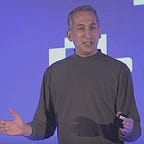The Database of Every Picture Imaginable
I wrote the post below in 1993 for April Fools, soon after I’d joined the Disney VR Studio. I posted it anonymously to USENET (the plaintext Reddit of the day).
I didn’t know much about neural nets back then, but the idea with this ‘bit-index’ is that any image can be represented by a single number, a numeric ‘prompt’ of sorts, which in the worst case is the concatenation of all bits in the original image (which ironically is just as big as the original image, hence the joke…).
Today, you could think of the bit-index as some text prompt that could be used to regenerate the desired image in a generative AI system. Indeed, there is some research going into creating unique text prompts for any existing image that could later regenerate the original, which is just another form of compression and decompression, using the giant trained AI model as the pad or codec.
Until now, a 3D graphics pipeline has been the most advanced image decompression system ever created, taking small 3D models and generating amazingly detailed 3D graphics. But I digress…
I’ve kept the typos and bad editing as is.
October 21, 1993 — [Geneva] Two Swiss scientists announced last week their stunning discovery of a method for generating and storing any conceivable picture using ordinary personal computers…
